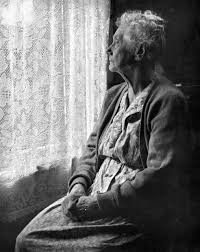Senior Citizen’s are amongst those that are most adversely affected in times of economic downfall (Rittner & Kirk, 1995).With the current economic state of our country, there are low income senior citizens that deny themselves a meal so they may preserve their financial resources. Many senior citizens at the poverty level are forced to face overwhelming medical bills, high living expenses, and rising prices in everyday items, such as cleaning supplies and items for hygiene. With limited financial income, these obstacles often become insurmountable.
The experience of financial strain often leads to a number of psychological problems (Gonyea, 1994).While these hardships are evident within senior citizens, it is often avoided by the general population (Rittner & Kirk, 1995).This psychological distress is permeated through the negative stereotypes that are now associated with this population (Rittner & Kirk, 1995).
During times of economic recession, senior citizens are often disproportionately affected by economic cutbacks (Rittner & Kirk, 1995).
It would be negligent to deny that there have been programs developed to face growing levels of poverty (Nicholas & Wiseman, 2010). Some of these programs incrude:
Supplemental Security Income
Subsidized housing
Medicare & Medicaid
While these programs have been established, they have not been promoted within society. The limited information provided about these programs could be a direct result of the negative stereotypes held about the elderly population (Gonyea, 1994). Many senior citizens are unaware of the programs that do exist. This lack of knowledge has lead to even greater financial instability (Rittner & Kirk, 1995).
The financial turmoil experienced by senior citizens is often denied by the general public. The schematic beliefs of society are those of financial security and prosperity
¤ “ For elderly people, this picture is further complicated by a pervasive belief that they are basically financially secure and exempt from economic hardships” (Rittner & Kirk, 1995, p.365).
¤ “During this period of fiscal crisis, society has begun to blame both the aged and the poor populations as the causes of this financial strain” (Gonyea, 1994, p.39).
The process of aging can be difficult for many individuals. Adjustments to lifestyle and acceptance of changing ability often lead to psychological distress (Broderick &Blewitt, 2010). Some changes that the elderly must face include:
¨ Cognitive Change
¨ Chronic Illness
¨ Dependency
Pairing these factors of aging with the struggles of poverty leads to increased feelings of (Broderick & Blewitt, 2010):
¨ Perceived Burdensomeness
¨ Thwarted Belongingness
When there is an increase in perceived burdensomeness and thwarted belongingness, suicidal ideation is often stimulated. In the last few years, research has shown a significant increase in suicide rates amongst the elderly (Broderick & Blewitt, 2010).
The stereotypes and biases held against senior citizens are perpetuating poverty within the elderly. Educating the public about the influences of these stereotypes may deter their development and affect. Many programs focus their attention on the biological needs of those that they serve. It is time for the psychological needs to be acknowledged and addressed.

References:
Broderick, P.C., & Blewitt, P. (2010). The life span: Human development for the helping professionals (3rd ed.).Upper Saddler River, NJ: Pearson Education, Inc.
Gonyea, J.G. (1994). The paradox of the advantages elder and the feminization of poverty. National Association of Social Workers, Inc., 35-43.
Nicholas, J. & Wiseman, M. (2010). Elderly poverty and supplemental security income, 2002-2005. Social Security Bulletin, 70, 1-30.
Rittner, B. & Kirk, A. (1995). Health care and public transportation use by poor and frail elderly people. National Association of Social Workers, Inc.,10, 365-373.














![clip_image002[5] clip_image002[5]](https://blogger.googleusercontent.com/img/b/R29vZ2xl/AVvXsEj8MBFs-HTHwHffDn7nt-PLfnb9bkv8JxxYB16GcobQ_FZnL72QGEwe0QDCyjwwh2Z-xrrkxvHvGkpSAyWxusfbIVmiYIc8oDY3e9wflAy9ZcYhS9M8mn5gt2dzgvK1xp5aA3e9Ah4kZvMT/?imgmax=800)










 This morning
This morning  We are thankful to have such a hard-working group of volunteers help us out with the Feed The Kids Project today!
We are thankful to have such a hard-working group of volunteers help us out with the Feed The Kids Project today!
 Humanitarian Service Project
Humanitarian Service Project









 HSP
HSP







